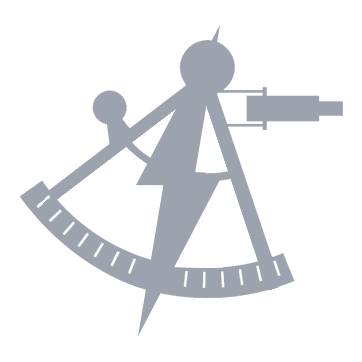Too many people followed Dahmnait Oland into the turbolift. There was her yeoman, her chief science officer and chief operations officer, and another two officers she didn’t actually recognise. She would have said something. She would have stomped her foot and complained, but the turbolift cars aboard Starbase Bravo were luxuriously wide. There was nothing to complain about, really. There was room for everybody.
Oland turned her back on them and busied herself with the schematic displayed on a widescreen LCARS panel. It wasn’t the travel of the turbolift that interested her. Instead, there was something else on the exterior that caught her eye. She pinched at the screen, zooming in and zooming in again.
It hadn’t been like this when she’d taken command of engineering departments. Oland considered herself lucky if starship captains deigned to come below decks to warp engineering. Normally, she had the run of the department to herself.
It hadn’t been like this at the Avalon Fleet Yards. Her first day in command of Hemmer Station had been unremarkable. A thursday. She had slept through her alarm, and no one had corrected her when she called the chief security officer by the wrong name. Her elevation to commander of planetary assets had been a progression from there. A logical next step. She had already been family at Avalon, both starting and peaking her career there.
This new assignment was proving to be a whole other hullabaloo. After a couple weeks of orientation, tours and transition meetings, today was the day. The command codes to Starbase Bravo had been transferred to her that morning, even before her first coffee.
Stabbing at the segment of the starbase schematics that caught her eye, Oland asked her first question as its commander.
“What colour is that?” she asked, unable to hide a measure of disdain. She pointed at an image of a small rectangular grate used to cover the hull-inset structures that housed sensor pallets.
“Ah…” Yeoman Aneasa started to say, pausing only long enough for her gaze to follow Oland’s finger. Sounding bubbly and eager to help, she said, “It looks like yellow to me.”
Dryly, Oland said, “Yes, it looks like yellow, but is it cadmium, sunflower or citrine?”
“Cadmium yellow, I believe,” Aneasa said. It impressed Oland that Aneasa could bring that fact to mind so readily, so easily. She would have to remember that.
“I noticed them from the runabout cockpit when I first arrived,” Oland said in a controlled tone of voice, just as the turbolift slowed to a halt. The double doors slid open, revealing the massive command and control hub that served as the Station Operations deck at the very top of the starbase.
Fixated on the memory of that ugly grate, Oland strode into operations without much presence of mind, without taking it in. She wouldn’t remember it later.
“I prefer citrine for halfnium-duranide antiradiation coating,” Oland said to Aneasa, who remained by her side. She spoke at a moderate pace with a couple of long pauses to give the appropriate weight to certain words. “Anything else looks… suboptimal.”
To Oland’s right, Jeffrey Holmgren interjected to say, “Commodore, can I show you something?” Her chief science officer was standing slightly awkwardly, rubbing the back of his neck. He offered a sheepish smile as an apology for intruding.
“Yes, Captain Holmgren, of course.” Oland was thankful for the excuse to escape her own hyper-fixations, and she followed Holmgren to the holographic science station.
While he tapped at the LCARS controls, Holmgren spoke to Oland in a whisper without looking at her.
“I’m not supposed to tell you that Lieutenant sh’Chales is about to fake a problem to gather us in your office,” Holmgren said in a conspiratorial timbre. “There’s already a bottle of synthehol champagne waiting–”
He stopped. Holmgren murmured, “Oh,” and then, “Oh, that’s weird.”
Holmgren drew Oland’s attention to the holographic star chart, pointing out two circles of pink light that winked out.
“We’ve lost contact,” he said, “with two more of our subspace relays located spinward of the Paulson Nebula.”
Looking up in Holmgren’s eyes, Oland asked, “Damaged? The reports from command have been consistent. There’s been no expansion of the subspace blackout zones in almost two weeks. Are we… the first to see it growing now?”
Before she could surmise anything from Holmgen’s expression, she caught a flicker in her peripheral vision. Two more circles of pink light winked out on the holo star chart. And then all of them vanished.
At least five different computer panels around the operations began chirruping with error alerts. Oland turned to the sound of urgent footsteps marching towards her.
Deck Officer Emem sharply reported, “Commodore, every subspace communication transmission has gone quiet. Diagnostics are showing… no disrepair with our transceivers, but we’re suddenly not receiving on any frequency.”
Oland cleared her throat. Wearily, she said, “That’s going to mean yellow alert.”
Racing over, Aneasa sputtered, “I missed that, commodore. Was that cadmium or citrine?”
At the same time, Holmgren muttered, “I thought I told sh’Chales not to touch anything station-wide.”
“None of you know me yet,” Oland stated, only a little louder. “I don’t yell.”
She locked eyes with Emem.
Looking right at him, Oland said again, “Yellow alert, commander.”
From one end of station operations to the other, yellow bars flashed across every LCARS panel only three times before the explosions started, and the station’s superstructure rumbled. What little light shone in from the viewports went dim, overcast by a long shadow.
On the holographic viewscreen, a massive slab-sided construct was charging right at them. This deep into the star system, its very presence was an impossibility. It would have had to bypass countless sensor nets and defensive systems. And yet there it was, an elongated wedge of a starship, tapered to a serrated prow.
Worse, it wasn’t alone.
Emem said, “We’re under attack,” and Holmgren insisted, “They came out of literally, literally nowhere.”
Oland called for shields and a red alert. No one questioned her this time.
“Who is it?” Oland asked as she stumbled toward the central command station. The inertial dampeners struggled to keep up with the sudden barrage of energy weapon attacks on the starbase. The deck rocked again beneath her feet.
Holmgren said, “The computer doesn’t recognise the hull anatomy or energy signatures. There’s a battleship, six escorts and a wave of fighters attacking us in concert. They’re using… polaron-based energy weapons.”
“Hail them,” Oland ordered. Starfleet had prepared her for any number of possibilities. However, leading at a shipyard meant most of them had been hypothetical. Before Frontier Day, at least.
Oland swallowed hard and stood taller. If their attackers were responsible for the Blackout, what else could they do?
“There’s too much subspace interference,” Emem replied, sounding distraught. “Our transceivers can’t even– Ah, scratch that. We’re receiving an audio message over short-range radio frequencies.”
Swallowing any sense of dread, Oland said, “Patch it through.”
Projected from every comm transceiver embedded in the overhead, a silken voice spoke slowly. He sounded smooth. Too smooth but insincere.
“We have been watching. Your intrusions into the Delta Quadrant have not gone unnoticed. Your intrusions into Underspace have not gone unnoticed.
“The Vaadwaur Supremacy is displeased. We have received Starfleet’s misbehaviour as an act of war.
“Don’t fret, little ones. The war is already over. We accept your surrender.“

 Bravo Fleet
Bravo Fleet






